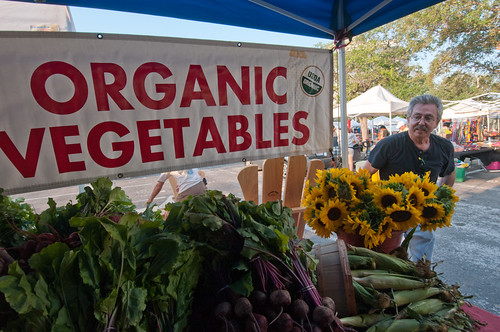
When consumers see the word "organic" on a product package or label, they have expectations about what is inside the package. The National Organic Program (NOP), part of USDA’s Agricultural Marketing Service (AMS), protects the integrity of the organic label by ensuring that organic producers and handlers meet consumer expectations. The NOP recently published an instruction that will bring more clarity to products with brand names containing the word "organic."
Organic products have strict production and labeling requirements. They must be produced and handled by operations that are certified as complying with the USDA organic regulations; made without the use of genetic engineering, ionizing radiation, or sewage sludge; and use substances allowed by the National List of Allowed and Prohibited Substances (National List).
Organic products can be labeled differently depending on the percentage of organic ingredients that they contain. There are three distinct labeling categories for organic products:
- 100 Percent Organic - Agricultural products in the "100 percent organic" category contain only ingredients that are certified organic, including any processing aids.
- Organic - Agricultural products in the "organic" category must contain no less than 95 percent of certified organic ingredients (excluding salt and water). The remaining five percent of ingredients must be organically produced, unless commercially unavailable or allowed on the National List.
- "Made With" Organic - Multi-ingredient agricultural products in the "made with" category contain at least 70 percent certified organic ingredients (excluding salt and water). Any remaining agricultural products are not required to be organically produced, but must be produced without excluded methods – for example, genetic engineering.
Two main product label parts are involved with organic labeling. The principal display panel (PDP) portion of the package is what consumers most likely see at the time of purchase. The information panel includes the list of ingredients contained in a product and other product information.
Products that are "100 percent organic" or "organic" may display the USDA organic seal anywhere on their product label and can display brand names that contain the word "organic" on their PDP as long they meet all labeling requirements. Otherwise, agricultural products that are not "100 percent organic" or "organic" may display company names containing the term "organic" only as part of the manufacturer, packer, or distributor statement required by the Food and Drug Administration (FDA) on the information panel.
This labeling difference allows consumers to easily distinguish between "100 percent organic" and "organic" products and products that are either labeled as "made with organic (specified ingredients or food groups)" or are not certified organic.
This distinction also helps consumers shop with confidence. Whenever a brand name containing the word "organic" is on a product's PDP, the product must comply with the USDA organic regulations. Additionally, organic producers and handlers can be assured that their competitors are not gaining an unfair advantage in the marketplace by using a misleading brand name on products that do not meet the USDA organic regulations.
This is not a new requirement, but it clarifies the expectations for certifiers who review and approve organic product labels, ensuring that organic producers and handlers follow the USDA organic regulations. This instruction will help certifiers interpret and apply the organic labeling rules consistently and fairly across the board.
Another example of NOP's commitment to organic integrity, this clarification will ensure that all organic products are labeled consistently, assure consumers that organic labeling requirements are being met and provide a fair market for all organic operations. You can learn more about organic labeling on our website.
